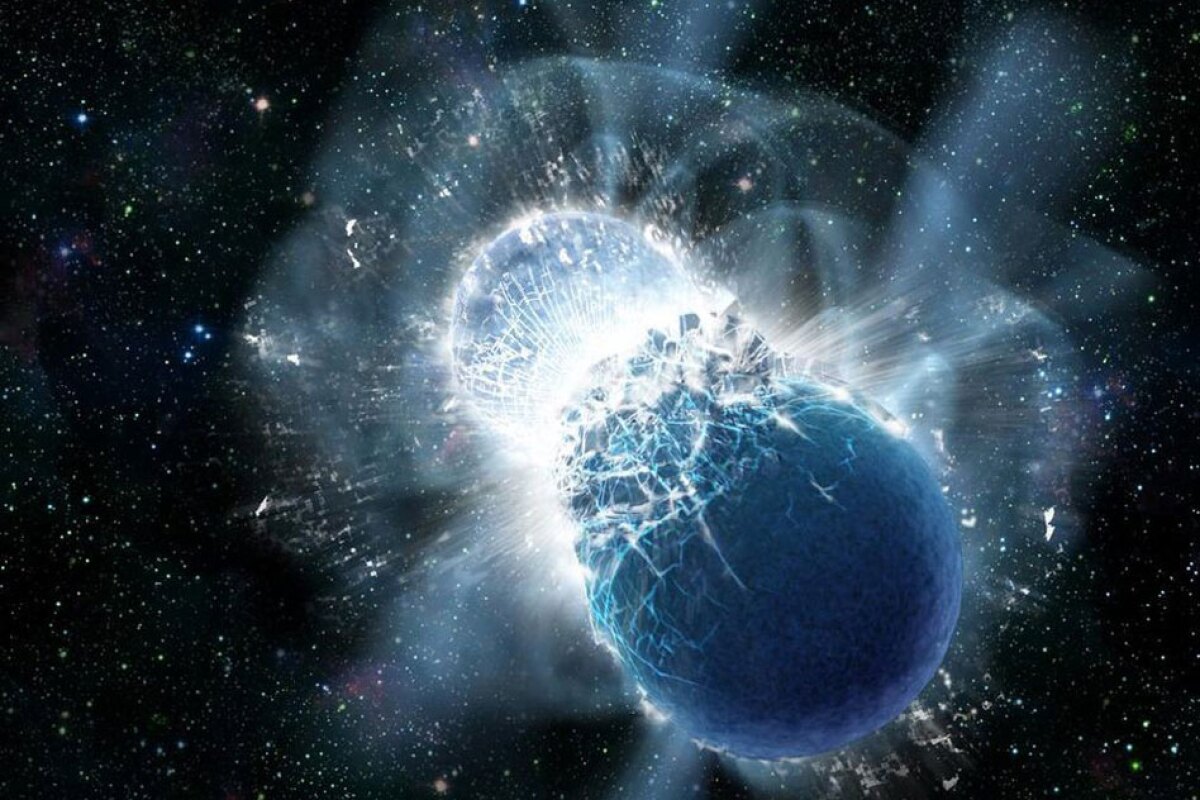The first detection of gravitational waves – ripples in the very fabric of spacetime, caused by cataclysmic events like black holes colliding – was one of the most important physics discoveries in a century. Three years on, we're now getting new detections so often it almost doesn't seem special anymore. Barely a month into a new observation run, the LIGO/Virgo collaboration has now reported five new events, including what may be the first ever detection of a black hole swallowing a neutron star.
At high enough levels, gravity has the ability to warp spacetime, leading to all sorts of science-fiction-sounding consequences like bending light and slowing down time itself. While those effects are usually contained locally around massive objects like neutron stars and black holes, when two of these objects collide they can send gravitational waves rippling through the universe, which we've been able to detect since 2015.
These new detections were made using three facilities working together – the two Laser Interferometer Gravitational-wave Observatory (LIGO) facilities in Washington and Louisiana, and the Virgo detector in Italy. All three only fired back up on April 1 after a year-long hiatus for upgrades to make them more sensitive.
And it looks like that's paying off, with five new detections in four weeks. The most intriguing of the new events was picked up on April 26, and it caught the attention of astronomers because it seems to be the first ever recording of a collision between a black hole and a neutron star. This kind of event was one that scientists were specifically looking for during this run, so to find it so early on is encouraging.

But it's not quite that clear-cut. The signal, dubbed S190426c, wasn't very strong, so the team can't be entirely sure what caused it, or even where it came from. It seems to have traveled about 1.2 billion light-years to get to us, and the three LIGO/Virgo facilities have triangulated the signal to within a region of about three percent of the total sky.
"The universe is keeping us on our toes," says Patrick Brady, a spokesperson for LIGO. "We're especially curious about the April 26 candidate. Unfortunately, the signal is rather weak. It's like listening to somebody whisper a word in a busy café; it can be difficult to make out the word or even to be sure that the person whispered at all. It will take some time to reach a conclusion about this candidate."
Another detection of note took place a day earlier, on April 25. This one appears to have been a collision between two neutron stars, marking only the second time this kind of event has been observed. This was much closer – a mere 500 million light-years from Earth – but unfortunately one of the LIGO facilities was offline at the time, meaning it's harder to pinpoint where it came from. The team has narrowed it down to about 18 percent of the sky, but that's quite a large area to search.
The remaining three detections most likely came from mergers between two black holes. That brings the total number of gravitational wave detections to date to 16 – 13 black hole mergers, two neutron star collisions and one (probable) black hole/neutron star merger.
"The latest LIGO-Virgo observing run is proving to be the most exciting one so far," says David H. Reitze, executive director of LIGO. "We're already seeing hints of the first observation of a black hole swallowing a neutron star. If it holds up, this would be a trifecta for LIGO and Virgo – in three years, we'll have observed every type of black hole and neutron star collision. But we've learned that claims of detections require a tremendous amount of painstaking work – checking and rechecking – so we'll have to see where the data takes us."
The current observation run still has another 11 months to go, so we'll no doubt be seeing more news coming out of LIGO and Virgo this year.
Source: MIT






